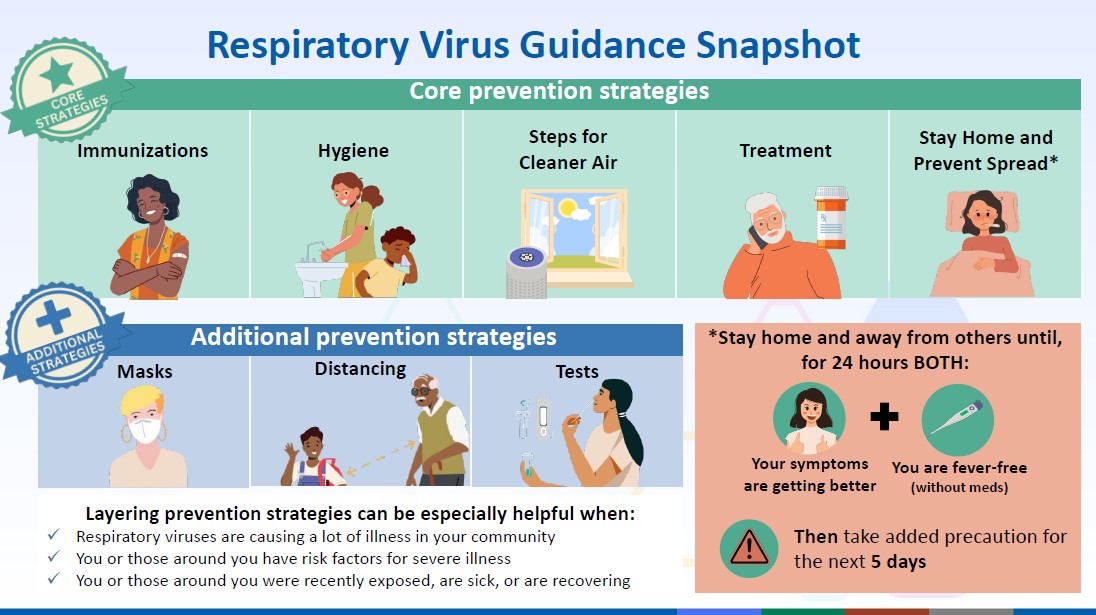At the start of March, the U.S. Centers for Disease Control and Prevention (CDC) released updated recommendations on preventing and treating respiratory viruses, including COVID-19, in community settings. These recommendations can be easier to follow, and they provide a unified approach for addressing several respiratory viruses like COVID-19, flu, and RSV. The CDC recommends these core prevention strategies:
- Stay up-to-date with vaccinations to protect against serious illness and hospitalization
- Practice good hygiene by covering your cough, washing your hands, and cleaning frequently touched surfaces
- Take steps for cleaner air, such as bringing in fresh, outside air, using an air purifier, or gathering outdoors
If you do get sick with COVID-19 or another respiratory virus, the CDC recommends that you stay at home and away from others. CDC has also provided treatment strategies, such as getting tested and taking prescribed medicines.
Normal activities can be resumed when, for at least 24 hours, symptoms have improved and a fever is gone without the use of fever-reducing medicine. When activities are resumed, you should take additional prevention measures over the next 5 days such as enhancing hygiene practices, keeping distance from others, wearing a well-fitting mask, and testing when you will be around other people indoors. These precautions are especially important when around high-risk people, such as those over 65 years old, those with weakened immune systems, or those at higher risk for severe disease.
Though every respiratory illness does not act the same, this unified approach can limit disease spread and make recommendations easier to follow and more likely to be adopted.
Read the complete updated respiratory virus prevention and treatment recommendations.
